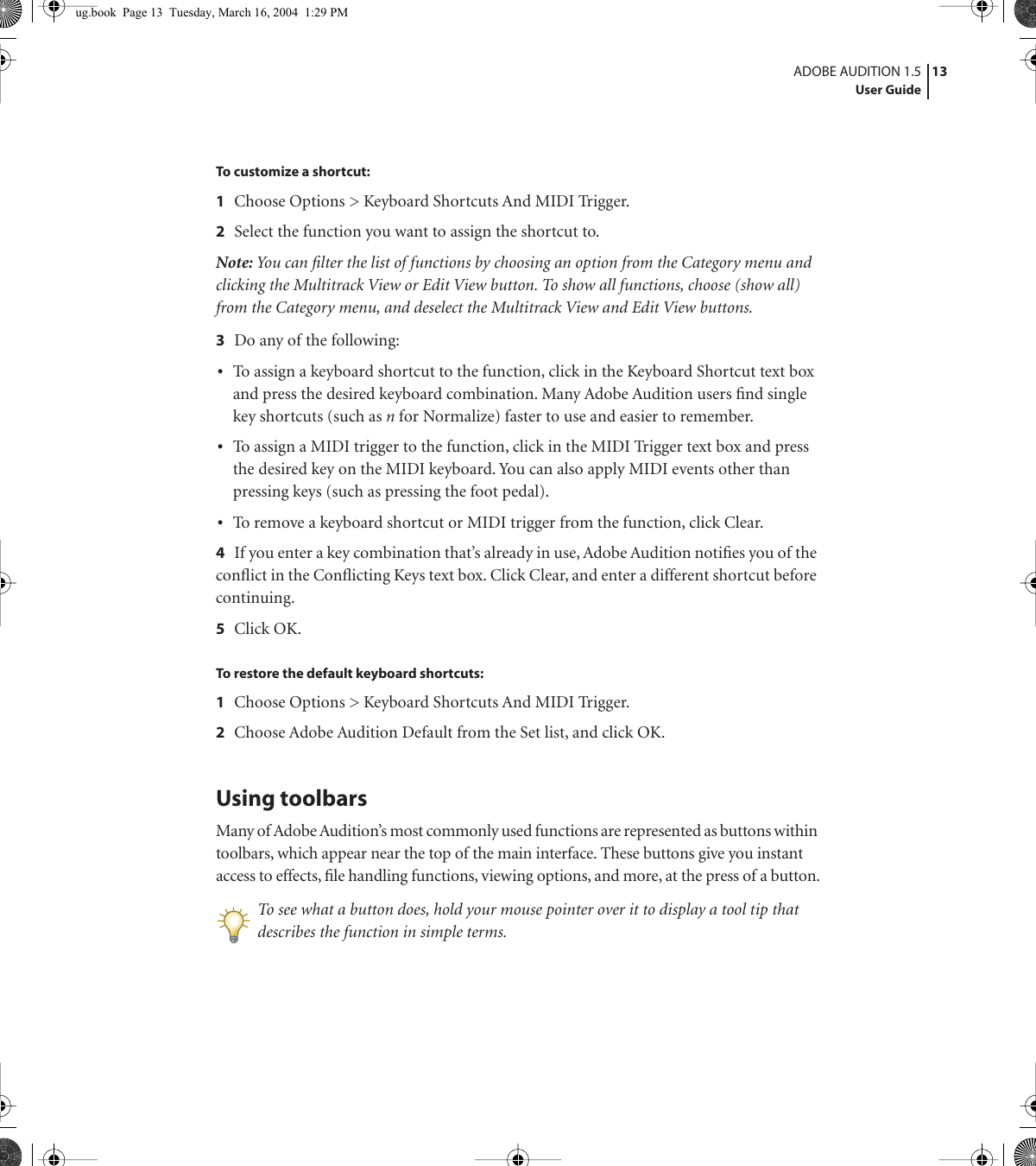The key and BPM values in the database are provided by Spotify who use their own estimation algorithms to find key and BPM. The analysis results you get from uploading audio files to this page come from different algorithms that are run on Tunebat servers. Due to the algorithms being different, sometimes the results are different.

- Audition is a comprehensive toolset that includes multitrack, waveform, and spectral display for creating, mixing, editing, and restoring audio content. This powerful audio workstation is designed to accelerate video production workflows and audio finishing — and deliver a polished mix with pristine sound.
- An expanded model based on previous work by Stefan Thurmer, Ingo Titze, and John Nix is used to analyze the TMEA All-State Large-School, Treble, and Tenor-Bass choral audition music. Each vocal part's pitches are subdivided by the piece's smallest common rhythmic duration and converted to hertz for equal weighting.
- How to copy, cut, paste, and delete audio in Audition; Visually fading and changing amplitude; Working with markers; Inverting, reversing, and silencing audio; How to automate common tasks in Audition; Analyze phase, frequency, and amplitude with Audition; Frequency Band Splitter; Undo, redo, and history; Converting sample types; Creating.
BPM Metadata – Value Chains / Process Flows
We live in a world of data; big data, real-time data, virtual data, sensor data, and the list goes on. As a result everyone is familiar with the concept of data records describing an object, transaction or activity in various digital systems. Metadata works to describe the data within those records. This blog post will focus on metadata associated with BPM Value Chains and Process Flows.
It should be noted that each metadata attribute added to a BP model should be chosen carefully. If the metadata has value when it is seeded; it needs to be maintained to harvest that value in the future. There is a cost for this maintenance, so before making a final decision it is wise to understand how BP reporting and analysis will be enhanced by the metadata, to ensure the cost is worth it.
Common metadata for all BPM elements are technical identification, description and ownership. The technical identification is a standard naming convention that is referenced by all associated process elements. Once the identification is established it should not change. The description is a text field that holds the definition of the element. Ownership can be the name of a person or position; however it is critically important to establish and maintain this ownership value for all process elements.
Value Chain Metadata:
Value chain elements are the highest level of the BP model hierarchy and do not consist of a lot detail. Potential metadata associated with each link in a VC are:
- Technical ID
- Description
- Ownership
- Data Security Level (H/M/L)
- Geographic Scope
- Profit (or Contribution to Profit)
- Cost
As an example, the following metadata list could be generated for the Retail Value Chain used in a previous post.
Business Process Flow Metadata:
The metadata for a business process flow references, and in some cases, disaggregates metadata values inherited from the value chain it is related to. Depending upon the cost of data collection; and the ease or ability to separate total values into a process view, the applicability of some metadata elements may be limited.

- Technical ID
- Description
- Ownership
- VC Relationship
- Execution frequency
- Execution cycle time (actual/expected)
- Data Security Level
- Geographic Scope
- Criticality Level
- Profit Value / Profit Contribution
- Operating Cost
- Intellectual Property Assessment
- Risk Level
- IT System Reference
- Control Method (Detective / Preventative)
Analyze Bpm In Audition Youtube
The above can be a lot of data collection considering most enterprises have hundreds, if not thousands, of process flows. The bolded metadata is the minimum that should be considered for adoption in a BP model. Other metadata values should only be adopted if the cost of data collection and maintenance is acceptable.
Following is an example of process flows associated with the Plan to Fulfill Value Chain.
The end result of collecting and maintaining this metadata must be enhanced BPM reporting and analytical capabilities. In the above examples this analysis could take the form of:
- Measuring the efficiency of a locally executed process against expected cycle time.
- Regularly identify and review controls for all highly sensitive data processes.
- Identify all value chains and process flows associated with a change in position.
- Identify processes and value chains in a region that is being reorganized to evaluate impacts on the process model.
There are many other metadata attributes (or data attributes) that could be considered for adoption in a BP model. Each one should be chosen to ensure their selection is aligned with BPM program objectives. This will become extremely important when considering potential metadata attributes for elements included in business process flows (i.e., activities, decisions, etc.), the subject of the next post.
| Авто | Видео-блоги | ДТП, аварии | Для маленьких | Еда, напитки |
|---|---|---|---|---|
| Животные | Закон и право | Знаменитости | Игры | Искусство |
| Комедии | Красота, мода | Кулинария, рецепты | Люди | Мото |
| Музыка | Мультфильмы | Наука, технологии | Новости | Образование |
| Политика | Праздники | Приколы | Природа | Происшествия |
| Путешествия | Развлечения | Ржач | Семья | Сериалы |
| Спорт | Стиль жизни | ТВ передачи | Танцы | Технологии |
| Товары | Ужасы | Фильмы | Шоу-бизнес | Юмор |
Видео Beat Matching - How to Change and Match BPM - Adobe Audition канала Mike Russell

